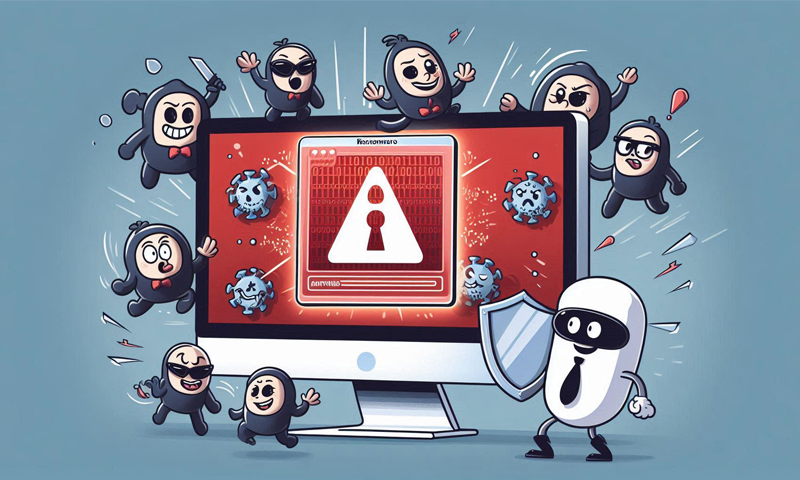In the ever-evolving landscape of cybersecurity, ransomware attacks have emerged as a dominant and increasingly sophisticated threat. These malicious software programs encrypt victims’ data, demanding hefty ransoms for release, and in some cases, threaten to publicly disclose sensitive information if payments are not made. Recent incidents have shed light on the growing complexity and audacity of these cyber threats.
Medusa Ransomware: A Rising Menace
Since its emergence in 2021, Medusa ransomware has rapidly expanded its reach, affecting over 300 organizations across sectors such as healthcare, education, legal, insurance, technology, and manufacturing. Operating on a double extortion model, Medusa not only encrypts data but also threatens to release it publicly if victims fail to comply with ransom demands. The group behind Medusa employs phishing campaigns to steal credentials and has been known to exploit unpatched software vulnerabilities. Cybersecurity officials from the FBI and the U.S. Cybersecurity and Infrastructure Security Agency (CISA) have issued warnings, advising organizations to update operating systems, software, and firmware; implement multifactor authentication; and use strong, unique passwords to mitigate risks.
Mora_001 and the SuperBlack Ransomware
Another alarming development involves the hacker group Mora_001, which has been exploiting unpatched Fortinet firewalls to deploy a new ransomware strain dubbed SuperBlack. This strain closely resembles LockBit 3.0 and has been associated with attacks on organizations that failed to update their firewall firmware. The exploitation of such vulnerabilities underscores the critical importance of timely security patches and updates in defending against emerging ransomware threats.
AI-Driven Malware: The Next Frontier
The integration of artificial intelligence (AI) into cybersecurity is a double-edged sword. While AI offers advanced defense mechanisms, cybercriminals are also harnessing AI to craft adaptable and destructive malware. These AI-driven tools can potentially autonomously evolve, making them harder to detect and counter. Although traditional methods like phishing and ransomware remain prevalent, the advent of AI-powered malware necessitates immediate preparation and adaptation by companies to safeguard against this emerging threat vector.
High-Profile Victims and Widespread Impact
The impact of ransomware attacks extends to prominent institutions. In June 2024, the Japanese video-sharing platform Niconico and its parent company Kadokawa fell victim to a ransomware attack by the Russian-linked group BlackSuit. The attackers leaked approximately 600GB of data, including personal details of users and staff, leading to significant operational disruptions and financial losses. The incident highlighted vulnerabilities in cybersecurity practices and the profound consequences of such breaches.
Similarly, in October 2023, the British Library experienced a ransomware attack by the hacker group Rhysida, resulting in the theft and public release of extensive data. The attack caused significant operational disruptions, including delays in services and financial implications, emphasizing the need for robust cybersecurity measures in protecting cultural and educational institutions.
Mitigation and Defense Strategies
To combat the escalating threat of ransomware, cybersecurity experts recommend a multifaceted approach:
Regular Software Updates: Ensure all operating systems and applications are up-to-date to patch known vulnerabilities.
Multifactor Authentication (MFA): Implement MFA across all services to add an extra layer of security against unauthorized access.
Data Segmentation and Backups: Store critical data on separate, secure devices and maintain regular, encrypted backups to facilitate recovery without yielding to ransom demands.
Network Monitoring: Employ advanced network monitoring tools to detect unusual activities indicative of ransomware infiltration.
User Education: Train employees to recognize phishing attempts and practice safe cybersecurity habits.
Additionally, organizations are advised against paying ransoms, as this does not guarantee the return of data and may encourage further attacks. Instead, reporting ransomware incidents to authorities like the FBI or CISA is recommended to aid in investigations and the development of broader defense strategies.
The landscape of ransomware attacks is continually evolving, with cybercriminals adopting more sophisticated tactics and targeting a broader range of industries. Staying informed about current threats and implementing comprehensive cybersecurity measures are essential steps for organizations to protect against these pervasive and damaging attacks.











